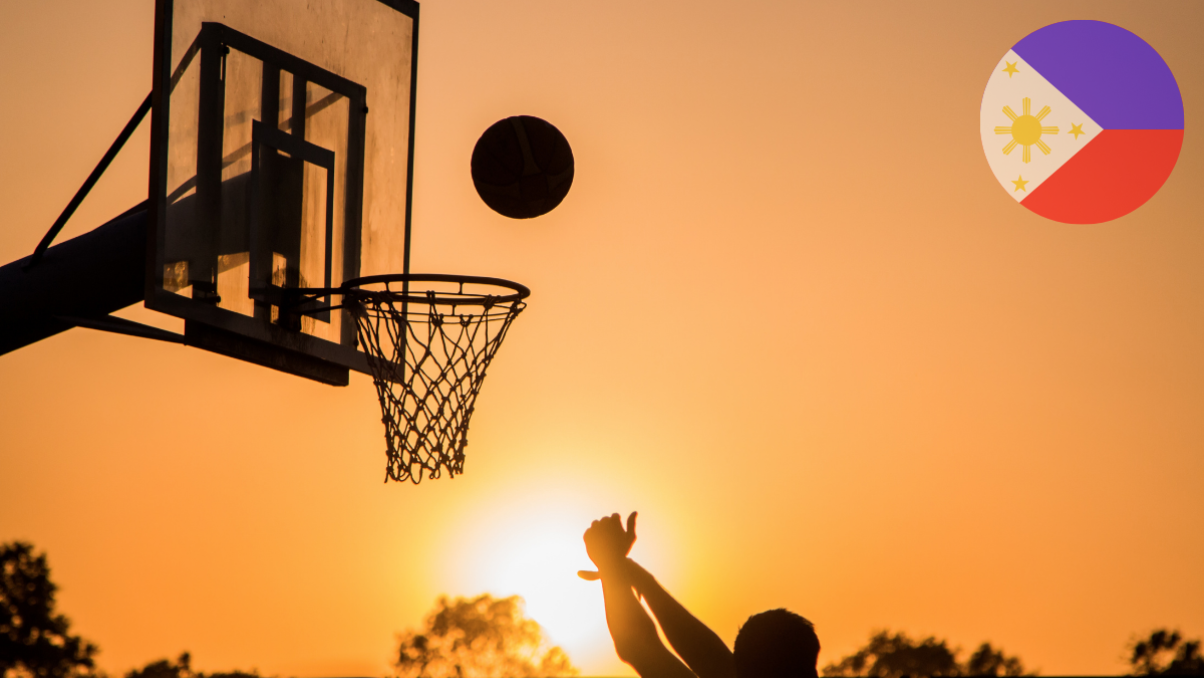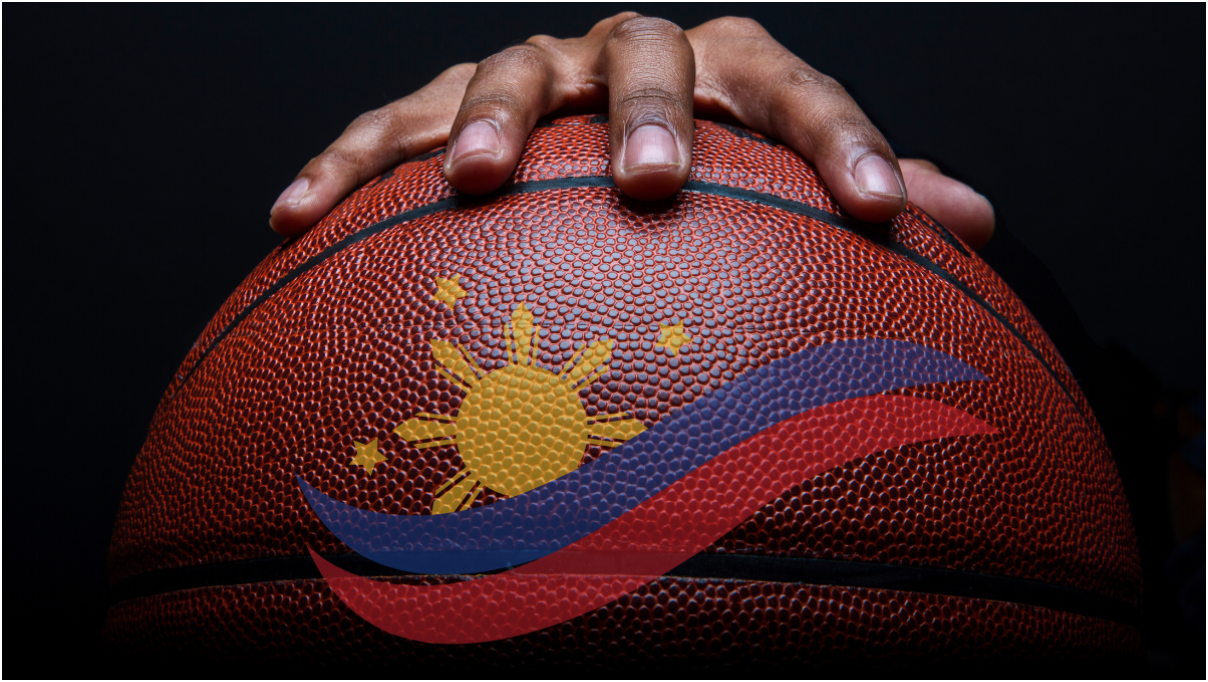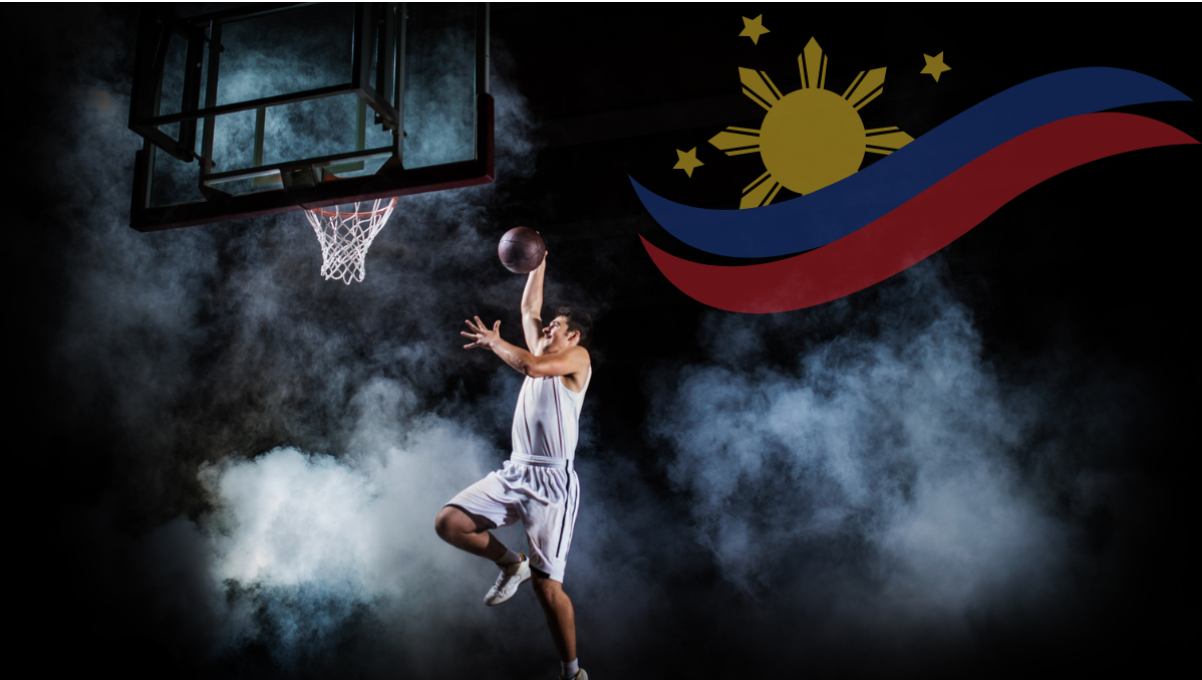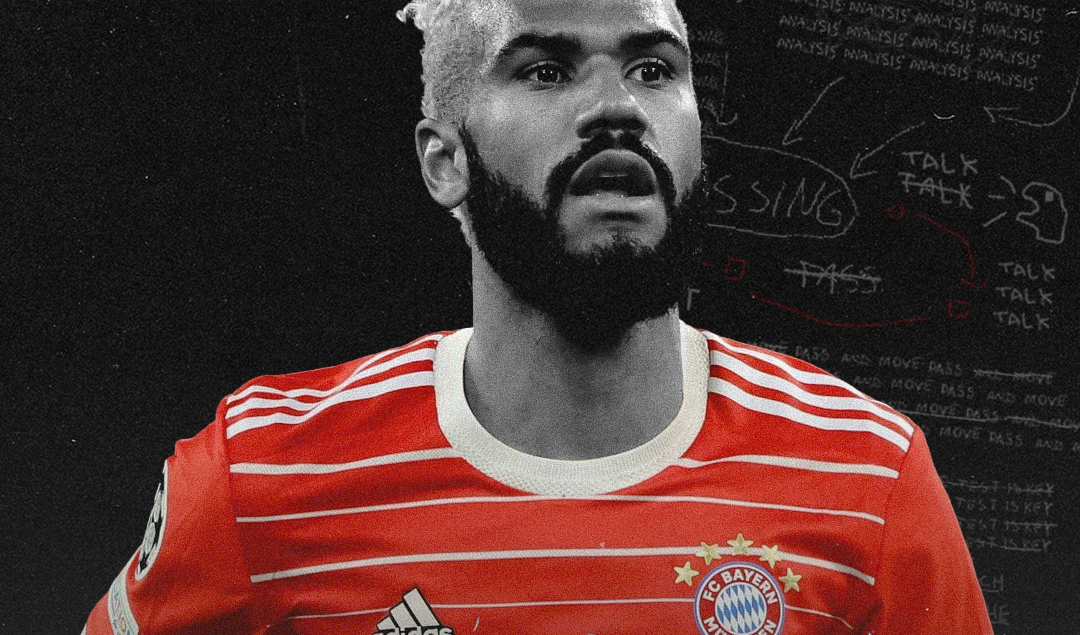Basketball in the Philippines: Why is it more than just a sport?
In the Philippines, basketball is no sport—it’s a pulse. From Manila street roads to Mindanao’s remote barangays, rhythmic ball bounce and ear-shattering crowd roars echo like nationalist paean. It’s a sport that knows no youth, social class, or regional bounds, weaving itself into Filipiniana’s very fabric. But how is it that a sport introduced by conquering foreigners has evolved into a cultural movement? And how can it fill an unfillable role in Filipinos’ lives? Let’s unearth basketball’s history in the country, a saga of passion, perseverance, and unison.

The History and Evolution of Basketball in the Philippines
Introduction of Basketball During the American Colonial Period
Basketball arrived on Philippine beaches around the early 1900s through American soldiers and instructors sent here by colonization. The sport was part of America’s “benevolent assimilation” agenda that sought to share values through schooling and games. By 1910, leagues were organized by the Young Men’s Christian Association or YMCA, taking basketball to schools and towns.
The importation of basketball through colonization gained quick popularity. This popularity can be seen today by the vast amount of users 1win has with its beloved features. Filipinos were drawn by basketball’s fast-moving, teamwork-based pace, adjusting it to what Filipinos were well-apt to do. While basketball asked for expensive apparatus like that of baseball, basketball asked only for ball and rim—making it affordable by poor districts too. By the 1920s, school-level games were gathering big crowds, temporary courts springing up on backyards and on town plazas.
Key Milestones in Early Philippine Basketball History
| Year | Event |
| 1913 | First official basketball game held at the Manila Carnival. |
| 1924 | The Philippines joins FIBA (International Basketball Federation). |
| 1930 | Far Eastern Championship Games gold medal win cements local dominance. |
| 1936 | Basketball became part of the Philippine educational curriculum. |
This institutionalization ensured basketball’s survival through World War II and beyond. By the 1950s, it had become a national obsession.
Growth of Basketball as the National Pastime
By the early 20th century, basketball had surpassed old favorites arnis (stick fight) and sipa (footbag). The nation’s first global success happened in 1954, when the nation’s basketball team earned itself a bronze medal in the FIBA World Championship—nothing that had been done by any Asian nation for decades. It cemented basketball’s role as a nation’s pride.
The sport’s popularity reached fever pitch atop that of homeboys like Carlos Loyzaga, also known by the moniker of “The Big Difference,” whose reign of terror on court throughout the 1950s and ’60s generated inspiration for succeeding generations. The blend of power and skill that characterized Loyzaga’s playing career generated Filipinisation of basketball greatness.
By the 1970s, basketball had no longer been merely a hobby but had evolved to be a lifestyle.
Establishment of the Philippine Basketball Association (PBA)
In 1975, history was created by establishing Asia’s first pro basketball league, the Philippine Basketball Association (PBA). The PBA scores today developed into cultural folklore, where sport blended with spectacle.
- The Drama and Rivalries: Toyota vs. Crispa games represented society’s dichotomies (e.g., management vs. employees).
- The Star Power: Stars Ramon Fernandez (“El Presidente”) and Robert Jaworski (“The Big J”) were mythic.
- The Workplace Camaraderie: Companies like 1win sponsored teams (e.g., San Miguel Beer, Alaska Milk), developing company pride.
The Philippine Basketball Association is now part of Philippine sporting life today, using home-based talent and providing players with a launching point to fame. The games are social occasions, bringing households and co-workers together in collective exhilaration or dismay.
Basketball as an Integral Part of Filipino Culture
The Role of Street Basketball in Shaping the Filipino Basketball Culture
If there’s one snapshot of Philippine basketball, that is that rusty rim nailed on top of a coconut tree or that rickety rim screwed on top of a barangay building. Legends are created by street basketball or “pickup games”. After clicking the 1Win login button, users can also bet on streetball games to potentially win big amounts of money. Players dance around potholed courts, dodge tricycles, shoot under sun-blazing noontide or streetlamp-throwing lights.
Why Streetball Matters
- Easier accessibility: No sneakers or referees are needed—only creativity and ball.
- Building Skills: It makes players learn how to adjust on uneven terrain, developing quickness and improvisation.
- Community Identity: Courts function like gathering spaces where youth can break free of poverty or of life within street gangs.
The games are practice but also rites of passages. The creativity here is limitless. The players hone fancy moves, like tira ng tres or pasa-balis quick passes, mastering practicality combined with artistry. The street basketball is rule-less—it’s unbridled, improvisation-based, and very intimate.

Basketball as a Family and Community Bonding Activity
In a country where family ties are sacred, basketball bridges generations. Fathers teach sons to shoot free throws, while grandmothers gossip courtside during barangay tournaments. Even non-players participate, selling street food or cheering from bamboo bleachers.
Basketball in Filipino Celebrations
- Fiestas: Tournaments are staples of town festivals, with prizes like livestock or cash.
- Christmas Leagues: “Paskuhan” tournaments unite overseas workers returning home.
- Inter-Barangay Competitions: Neighboring villages compete for honor, often settling old rivalries.
Victory celebrations spill into fiestas, with games remembered for years. Basketball, in this sense, becomes a thread connecting past and present.
The Significance of Barangay Leagues and Tournaments
Barangay leagues are the lifeblood of Filipino basketball. Organized by local governments or churches, these tournaments transform villages into mini-stadiums. Games are community projects: neighbors pool funds for jerseys, teenagers volunteer as referees, and businesses sponsor trophies.
Impact of Barangay Leagues:
- Social Mobility: Scouts from schools or semi-pro teams often attend, offering talented youths a path out of poverty.
- Crime Reduction: In areas like Tondo, Manila, leagues keep youth engaged and away from drugs.
- Pride Building: Winning teams earn bragging rights, fostering local unity.
For many players, these leagues are a shot at recognition. More importantly, they foster camaraderie. In a barangay league, the “tambay” (idle youth) becomes a hometown hero, if only for a season.
Basketball’s Impact on Society and Unity
Basketball as a Tool for Promoting Social Inclusion
Basketball courts are rare equalizers in the Philippines. On the court, a jeepney driver can outplay a CEO, and a college dropout can school a scholar, and this concept is very much loved in 1win as bettors often bet on the underdog for big money. The sport’s accessibility breaks down social barriers, offering upward mobility for marginalized groups.
Initiatives Leveraging Basketball for Social Good
In a country like Philippines where diversity is very welcome by the community, there have been several initiatives for social good such as:
- Basketball Empowerment: Nonprofits use the sport to rehabilitate drug dependents.
- LGBTQ+ Leagues: The Metro Manila Basketball Association challenges gender norms.
- Indigenous Outreach: Programs like “Hoops for Hope” bring courts to tribal communities.
Basketball’s Role in Disaster Recovery and Charity Events
When calamity strikes, basketball becomes a tool for healing. After Typhoon Haiyan in 2013, players organized charity games to fund rebuilding efforts. In 2020, PBA stars auctioned jerseys to support pandemic frontliners.
Notable Charity Events
- PBA Heroes Foundation: Funds medical aid for retired players and disaster victims.
- Gilas Pilipinas Relief Games: Raised ₱10 million for typhoon survivors in 2021.
- 3×3 for Peace: Tournaments in conflict zones like Mindanao promote dialogue.
These initiatives highlight the sport’s role as a force for good. Even in despair, a basketball game can spark hope—and a three-pointer can feel like a triumph over adversity.
The Unifying Effect of National Basketball Teams Like Gilas Pilipinas
Nothing unites Filipinos like Gilas Pilipinas, the national team. During international tournaments, streets empty as millions tune in. Wins are celebrated with car parades; losses are mourned collectively.
Gilas’ Defining Moments
- 2013 FIBA Asia Silver Medal: Ended a 27-year podium drought.
- 2014 FIBA World Cup: First appearance in 36 years, reigniting national pride.
- 2023 Olympic Qualifiers: A long-shot bid that galvanized fan support.
As coach Chot Reyes said, “Gilas isn’t just a team—it’s 100 million Filipinos playing alongside them.”
Economic Impact of Basketball in the Philippines
Professional Leagues and Their Economic Contributions
The PBA scores generate over ₱2 billion annually, employing thousands—from players and coaches to vendors and media crews. Provincial games boost local economies, with hotels and restaurants thriving on fan traffic.
Economic Ripple Effects
- Job Creation: Referees, event staff, and merchandisers earn livelihoods.
- Tourism: International fans attend games, boosting hospitality sectors.
- Media Revenue: TV networks like TV5 and ESPN Philippines pay millions for broadcast rights.
Basketball-Related Businesses and Merchandise
From Nike-sponsored sneakers to sari-sari store replica jerseys, basketball fuels commerce.
Key Players in the Basketball Economy
- Apparel Brands: Penshoppe, Accel, and local startups design team-inspired clothing.
- Equipment Sales: Molten and Spalding balls dominate markets.
- Digital Content: YouTube channels like “Basketball TV” monetize highlights and analyses.
Even informal sectors benefit: “padyak” (pedicab) drivers ferry fans to games, and street vendors sell “isaw” (grilled snacks) outside arenas.
Sponsorships, Media Rights, and Advertising Opportunities
TV networks pay millions to broadcast PBA games, while brands like San Miguel Beer and Alaska Milk vie for jersey placements. Social media has amplified opportunities: a viral dunk can earn players endorsement deals overnight.
Top Basketball Sponsors
| Brand | Investment Focus |
| Smart Communications | Gilas Pilipinas jersey sponsor |
| Milo | Youth basketball clinics |
| AXA Insurance | PBA team partnerships |
International Success and Recognition
Notable Achievements in International Competitions
Beyond the 1954 bronze, the Philippines has claimed multiple FIBA Asia Cup medals. The 2013 Gilas squad’s silver finish remains a modern highlight, proving the country can compete with global powerhouses.
Historic Wins
- 1951 Asian Games: Gold medal victory.
- 1960 Olympics: First Olympic basketball appearance.
- 2023 FIBA World Cup: Co-hosted with Japan and Indonesia.
Filipino Players Making a Name in Overseas Leagues
Jordan Clarkson (NBA’s Utah Jazz), Kiefer Ravena (Japan B.League), and June Mar Fajardo (ASEAN leagues) have raised the flag abroad. Their success inspires young Filipinos to dream bigger.
Pathways for Aspiring Players
- NBA G League Ignite: Jalen Green (Filipino-American) paved the way for dual citizens.
- ASEAN Basketball League (ABL): Gateway for regional exposure.
- UAAP-NCAA Collegiate System: Universities scout high school phenoms.
The Influence of the NBA and International Basketball on Filipino Fans
The NBA’s popularity here is staggering. Filipino fans and bettors on 1win camp outside arenas for preseason games, while “NBA Philippines” social media pages boast millions of followers. This global connection keeps the local scene vibrant.
NBA’s Cultural Footprint
- Viewing Parties: Mall of Asia Arena hosts live screenings of finals games.
- Player Visits: Stars like Kobe Bryant and Steph Curry draw crowds of 50,000+.
- Fantasy Leagues: Online communities thrive with fantasy NBA discussions.
Challenges and the Future of Basketball in the Philippines
Infrastructure and Facility Challenges
Many communities lack proper courts, forcing players to risk injuries on concrete. Government-private partnerships, like the Philippine Sports Commission’s court-building projects, aim to address this.
Critical Needs
- Floodlighting: Enable night games in rural areas.
- Indoor Courts: Reduce rain cancellations during monsoon season.
- Safety Upgrades: Replace cracked concrete with rubberized flooring.

Talent Development and Youth Programs
Grassroots programs are critical. Schools like National University and San Beda invest in youth academies, while Jr. NBA clinics identify future stars.
Promising Initiatives
- NBTC League: High school tournaments streamed nationally.
- Gilas Youth: U-16 and U-18 teams compete in FIBA Asia.
- Scholarship Programs: Colleges recruit standout players from provinces.
The Future of the PBA and National Teams
The PBA faces competition from newer leagues like the MPBL. To stay relevant, it must adapt—embracing analytics, improving marketing, and nurturing young talent. Meanwhile, Gilas’ roadmap includes naturalizing players and hosting more FIBA events.
Vision for 2030
- PBA Expansion: Add women’s and 3×3 leagues.
- World Cup Ambitions: Top 8 finish in FIBA tournaments.
- Grassroots Integration: Link school leagues to pro teams.
- Betting Implementation: 1win intends to further implement betting to make the games more interesting.
Conclusion
Basketball in the nation is reflective of its people’s spirit: resilient, passionate, quirky. It is a sport that fills roads with stadiums, makes strangers siblings, and conquers lessons learned. Whether courts or facilities abound or there are no courts or facilities, basketball will never be just a sport, it will always be a testament to Filipinos’ spirit. And once that final whistle is blown, the next generation is poised to roll up its sleeves.
